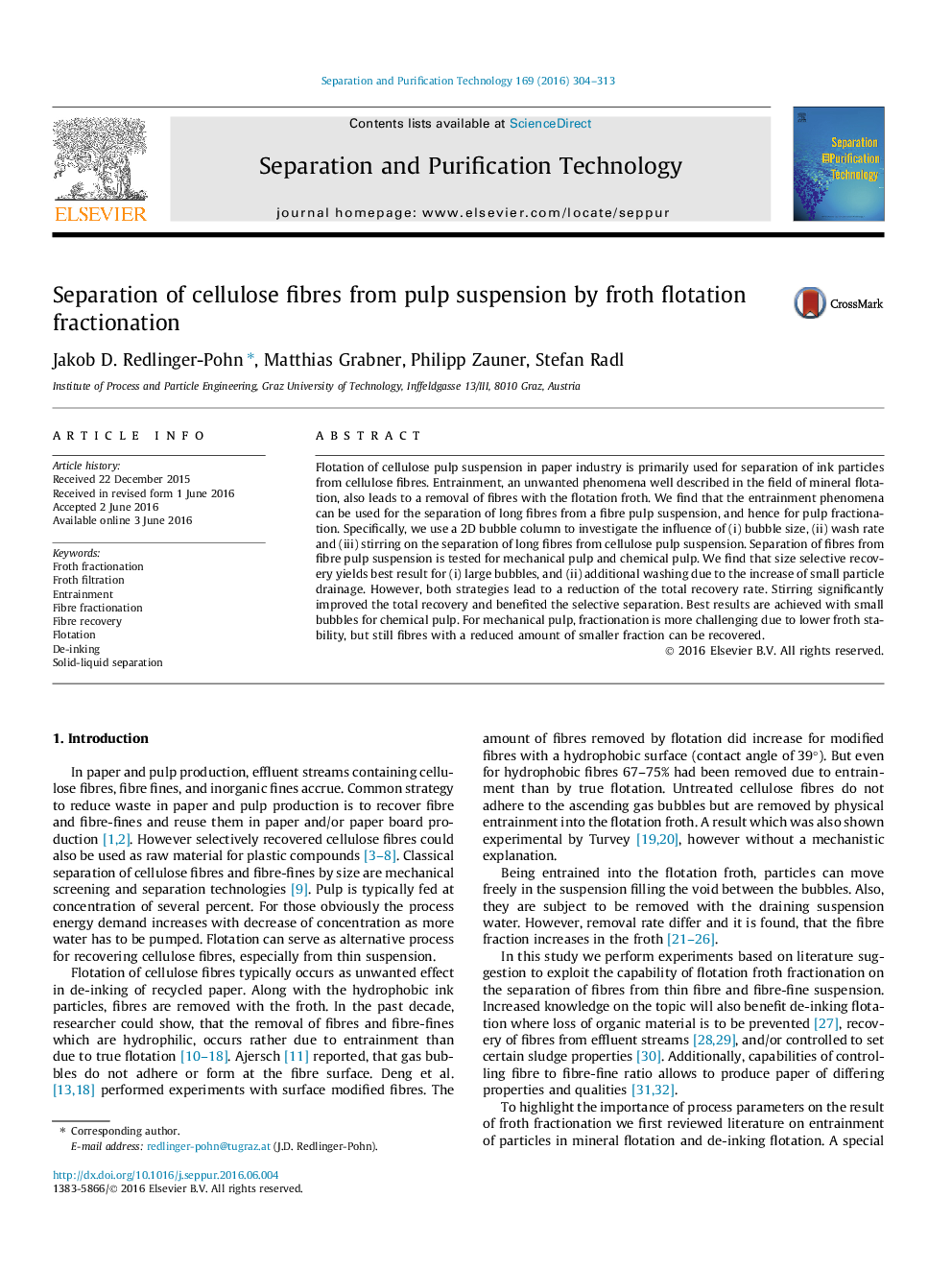| Article ID | Journal | Published Year | Pages | File Type |
|---|---|---|---|---|
| 639905 | Separation and Purification Technology | 2016 | 10 Pages |
•Long fibres are recovered from thin suspension.•Fibres are trapped in flotation froth, and fines are washed from the froth.•Washing improves fractionation, reduces recovery.•Gentle stirring improves fractionation and recovery.
Flotation of cellulose pulp suspension in paper industry is primarily used for separation of ink particles from cellulose fibres. Entrainment, an unwanted phenomena well described in the field of mineral flotation, also leads to a removal of fibres with the flotation froth. We find that the entrainment phenomena can be used for the separation of long fibres from a fibre pulp suspension, and hence for pulp fractionation. Specifically, we use a 2D bubble column to investigate the influence of (i) bubble size, (ii) wash rate and (iii) stirring on the separation of long fibres from cellulose pulp suspension. Separation of fibres from fibre pulp suspension is tested for mechanical pulp and chemical pulp. We find that size selective recovery yields best result for (i) large bubbles, and (ii) additional washing due to the increase of small particle drainage. However, both strategies lead to a reduction of the total recovery rate. Stirring significantly improved the total recovery and benefited the selective separation. Best results are achieved with small bubbles for chemical pulp. For mechanical pulp, fractionation is more challenging due to lower froth stability, but still fibres with a reduced amount of smaller fraction can be recovered.
Graphical abstractFigure optionsDownload full-size imageDownload as PowerPoint slide
